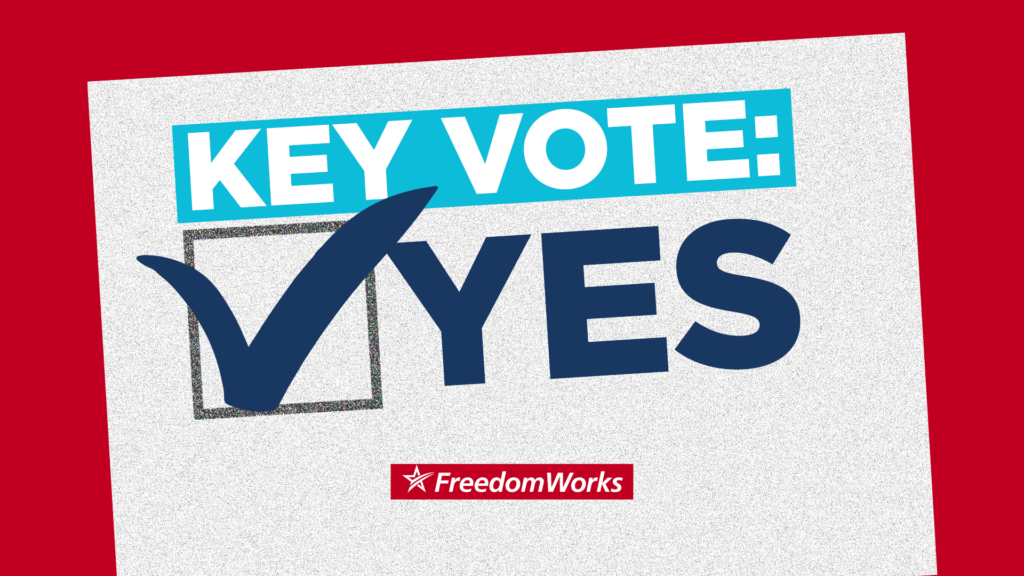Expansion of the Federal Safety Valve for Mandatory Minimum Sentences
The Sentencing Reform Act and the Sentencing Reform and Corrections Act offered several modifications to federal sentencing laws. Although these bills did not go as far as the Smarter Sentencing Act, introduced by Rep. Raul Labrador (R-Idaho) and Sen. Mike Lee (R-Utah), they were improvements over the status quo.
One key component of the Sentencing Reform Act, the Sentencing Reform and Corrections Act, and the Smarter Sentencing Act was an expansion of the federal safety valve. The safety valve is an exception to mandatory minimum sentences for nonviolent drug offenders with little to no criminal history. It is a mechanism that allows a sentencing judge to issue a judgment against an eligible offender below a mandatory minimum sentence.
The existing federal safety valve was created in 1994 with the passage of the Violent Crime Control and Law Enforcement Act, also known as the 1994 crime bill. To be eligible for the safety valve, an offender has to meet five criteria defined in the statute.
The Sentencing Reform Act, Sentencing Reform and Corrections Act, and the Smarter Sentencing Act proposed an expansion of eligibility for the safety valve by increasing the number of criminal history points an offender may have on his or her record. The safety valve does not prevent an eligible offender from serving time in prison. It does, however, reduce overcrowding and allows the limited number of prison beds to be used for violent criminals.
The safety valve also restores a partial measure of judicial discretion, allowing a judge to sentence below a statutory mandatory minimum, should the judge believe the sentence is too harsh for the offense committed.
There is also a fiscal component to these issues. The average cost of incarcerating a prisoner in the federal prison system hovers just below $30,000 annually. In 2000, the average cost was $21,603. Between FY 2000 and FY 2013, the Bureau of Prisons’ budget grew from $3.668 billion to $6.445 billion. In FY 2017, the agency’s budget was $6.935 billion.
As mandatory spending and interest on the debt held by the public consume greater shares of the federal budget, there will be a crowd out effect on discretionary spending. Congress will need to look for innovative ways to reduce outlays across the board. Enacting reasonable sentencing policies, such as expanding the safety valve, with a proven track record of success would help alleviate the concern.
Since the creation of the federal safety valve, more than 80,000 federal offenders have received fairer, more just sentences. These lesser sentences for nonviolent, low-level drug offenders allow limited prison resources to be used on violent, repeat offenders who are true threats to public safety.
However, in the 16 years following the implementation of the federal safety valve, an analysis from the United States Sentencing Commission reported that the annual number of federal inmates increased from 37,091 to 76,216, with almost half in for drugs, and cited mandatory minimum sentences as a driving factor. In FY 2010, 26.1 percent of drug offenders received relief through the federal safety valve.
States, as is often the case in criminal justice reform, have been the leaders on the expansion of safety valves, and have seen significant crime reduction and monetary savings as a result. Michigan has gone further than simply expanding the safety valve, and actually repealed most of its drug-related mandatory minimums in 2002. In the decade following the repeal, prison admittances fell, billions in tax dollars were saved, and the crime rate fell 27 percent.
More modest changes to mandatory minimum laws have been effective in states such as South Carolina, whose Omnibus Crime Reduction and Sentencing Reform Act in 2010 exempted first convictions of simple drug possession from mandatory minimums. As a result, South Carolina was able to close two minimum-security prisons, save millions of their taxpayers’ dollars, and witness a decrease in crime rates.
Sentencing reform in the past five years in Georgia has been a similar success story, with Gov. Nathan Deal’s Special Council on Criminal Justice Reform’s recommended safety valve being signed into law in 2013. These two states’ more recent reforms to mandatory minimum laws represent states’ continual realization that giving latitude to judges to sentence below mandatory minimums as they see fit, based on the facts of each individual case, is logical, cost-effective, and contributes to public safety. States that also have safety valve provisions in their statutes include Connecticut, Florida, Maine, Montana, New York, Oregon, and Virginia.
The proposed changes to the federal code to expand the safety valve to offenders who have up to three or four criminal history points, with exceptions for some of those points coming from more serious or violent offenses, is a modest, common sense change. Nothing in the safety valve prevents judges from sentencing prisoners at or above the mandatory minimum even if they are eligible for the safety valve, but simply allows judicial discretion to ensure that prison resources are being used where they can best protect public safety, and not wasted on nonviolent, low-level drug offenders.
In the 115th Congress, Senate Judiciary Committee Chairman Chuck Grassley (R-Iowa) has reintroduced the Sentencing Reform and Correction Act and Sen. Mike Lee (R-Utah) has reintroduced the Smarter Sentencing Act, both of which include an expansion of the federal safety valve. Although the Sentencing Reform Act has not yet been reintroduced by House Judiciary Committee Chairman Bob Goodlatte (R-Va.), the Prison Reform and Redemption Act, sponsored by Rep. Doug Collins (R-Ga.) would serve as a likely vehicle for sentencing reforms similar to those found in the Sentencing Reform Act.
Should the House Judiciary Committee markup the Prison Reform and Redemption Act, FreedomWorks urges the committee to include an expansion of the federal safety valve that would allow judicial discretion in sentencing qualifying offenders to ensure that lengthy sentences and prison resources are spent on criminals who represent a serious threat to our communities.
Expansion of the Federal Safety Valve for Mandatory Minimum Sentences



